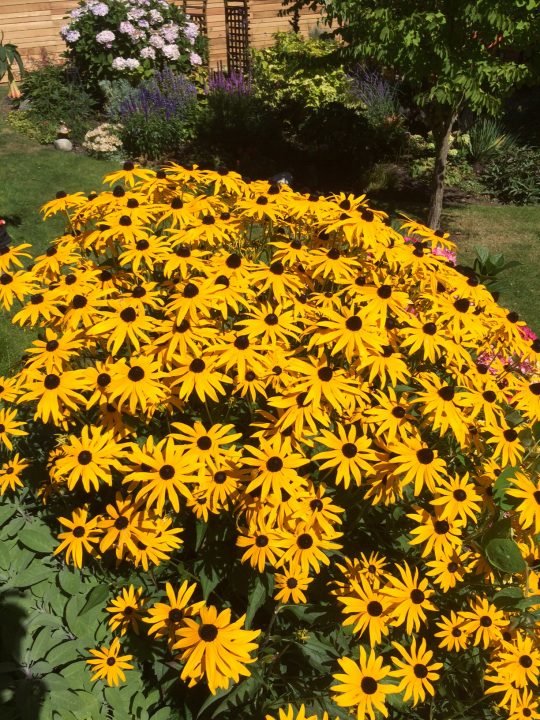
By Peg Keenleyside
September can be a time when your garden looks a little lackluster: the annuals you put out in May are looking like the party-goers who stayed too long at the wedding, many plants are stressed from the heat of July and August and most well past their bloom time.
If you’re looking for a way to freshen up the garden this month and on into the later fall, this is when you want to get some fall-blooming annuals and perennials into your faded summer pots and strategically placed out into the garden.
Here’s an easy-to-find, back pocket list of plants to look for at the big box this month:
Coleus: This is a super-performing annual with a fantastic range of rich, vibrant foliage colors such as burgundies, dusky oranges, pinks, yellows and greens. They’re mostly used as a shade plant but they can tolerate some sun (a few hours either at the beginning or end of the day). Pinch back the growing tip for a better spread of growth.
Asters: The fall-flowering purple aster is a mood-lifting addition of color to the fall garden. You’ll find these perennials aplenty in the nurseries now. I bring home a bunch and put several out in pots in the garden wherever a spot needs brightening up. Mix them up with pots of yellow mums – that fall flower standard – and get a more nuanced look.
Sedum Autumn Joy: This plant comes into its own in the fall with a soft, pink, airy blooms on a plant that stands about 12-18" high with the characteristic rigid leaf structure of sedums.
These plants look their best planted in groups of three or in a large pot surrounded by some smaller plants.
Coreopsis: The easy-to-find version of coreopsis has a tiny, daisy-like yellow flower that sits atop a mass of airy green foliage. They tend to get overlooked at the garden center earlier in the year because you don’t see them come into bloom until late summer/early fall.
It’s also worth it to sleuth out some of the different color flower hybrids around; reds, apricots and yellow/oranges. These plants are about 12-18" high and look great around walkways.
Crocosmia: A plant cousin to the gladiola, crocosmia grows from bulbs, producing clumps of green sword-shaped leaves with tall, arching spikes of funnel-shaped blooms showing in mid-to-late summer.
The red variety “Lucifer” is the easiest to find in garden centers, but keep your eye out for the harder-to-find yellow flower hybrids. Because crocosmia likes to reproduce bulbs at a great rate, plant them in a large plastic tub (with drainage holes punched in the bottom), sunk into the ground to contain their spread.
Calamagrotis “Karl Foerster”: This superb, tall-standing columnar reed grass really comes into show in the fall with its feathery tan blooms that are as equally handsome in mass plantings in the garden as they are as single plants in a pot.
There are other calamagrotis grasses, but “Karl Foertser” is a stand out; growing up to 6 feet high. These may not be so easy to find at the big box stores.
Coneflower (Echinacea): Coneflowers are a welcome fall bloomer and come in an amazing array of hybrid colors, everything from the common deep pink to reds, burgundies and yellow-pinks.
For a look at some of the really great choices, take a trip out to West Coast Gardens nursery in Surrey where they offer an in-house phyto-sanitary service so that you can import your plants into Point Roberts.
Brown-eyed Susan (Rudbeckia): The late summer and fall garden just isn’t complete without the charm of old-fashioned brown-eyed Susans; also known by their Latin name, “Rudbeckia.”
Most varieties grow into a bushy, upright clump with a ‘big bouquet’ display of brown-centered, golden-orange daisies. Like coneflowers and crocosmia, these make for great cut flowers – bring some of their cheer indoors as the days get shorter.
Comments
No comments on this item Please log in to comment by clicking here